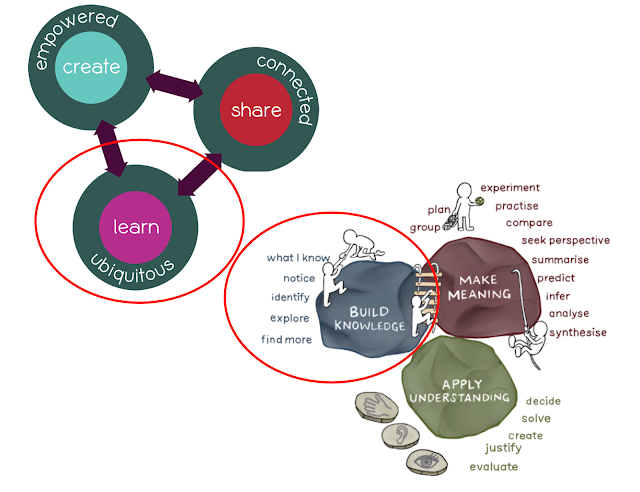Reporting of Evaluation 2020
Some of the key changes in my teaching has been to create the authenticity of my learning design. Grabbing the situation and making the most of it. Covid Hit, forced lockdown, created an authentic and rich learning experience for writing.
Below are some of the learners written reflections about the lockdown. This is evidence to show shifts in learners language development, chose of emotive language.
A small sample of Learners Writing...
"I had many yellow moments because I was having fun doing my art work at home. The blue times were sad because I missed my dad. My purple time was special because I got to spend time with my family".
* * *
"My days were colourful like a rainbow because sometimes my sister and I would fight. It made me red. Yellow was when I was jumping on my bed. I was green I was watching movies. My black times were when my sister was mean to me. My blue time was nice because I got to get some seaweed from the beach".
* * *
"I was doing lots of learning, which made me sleepy. These were when I had the brown days. The blue days I was flying because I was happy on my bike."
* * *
"The yellow moments were when I was gardening with mum and dad. My blue days when I was bored. My red moments were exciting because it is nearly my birthday."
* * *
"I felt purple when I was feeling nervous. It was when I got woken up and it was my first day back at school. I felt red when I was super excited after school had finished as I had a great day."
Summarise evidence about key shifts in the problem of student learning.
By looking at the progress made in our learners books shows shifts in learners progress. The student voice is saying that they have more ideas to write down, able to use the success criteria and the word cards.
The Research
Steve Graham, Karen R. Harris, Linda Mason published.
"Improving the writing performance, knowledge, and self-efficacy of struggling
young writers: The effects of self-regulated strategy development
By using this research and Implementing Self-Regulated Strategy Development (SRSD) was a way to improve self efficacy, knowledge, and motivation.
Here are some samples of our Māori Learners writing books, showing evidence of planning, checking against the success criteria, more writing milage, having more ideas to write about in a sequence.
These interventions of gifting vocabulary, picture talk, increasing oral language opportunities, working on self efficacy as writers, separating the writing and reading time to provide more instructions, creating rich, real and authentic learning tasks, linking writing to concept has been successful interventions that have raised student achievement in writing.
When I reflect on my teaching cycle. I notice a shift in my mindset that we can not
Assume that our learner have the tools and strategies for writing, have the ideas of what to write, know the expectations or can make the connections to what they experience and what they can read and write. Our learners are hungry to learn new words and feel a sense of self worth and pride as writers.
I agree with Wolf Fisher's research and have seen this across my CoL years that learners struggle to see the connections between reading and writing and the gap tends to increase more for some learners. For our Māori Learners If we can hook into Te Reo Māori, learn the Tikanga to empower our learner to be writers we can help to raise student achievement across all learners.








Comments
Post a Comment